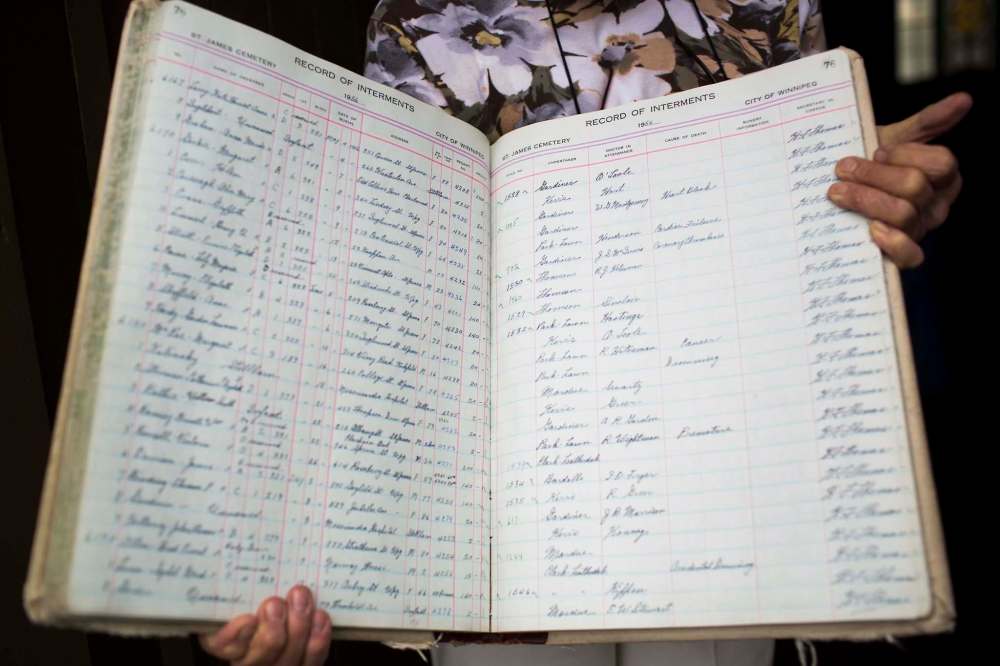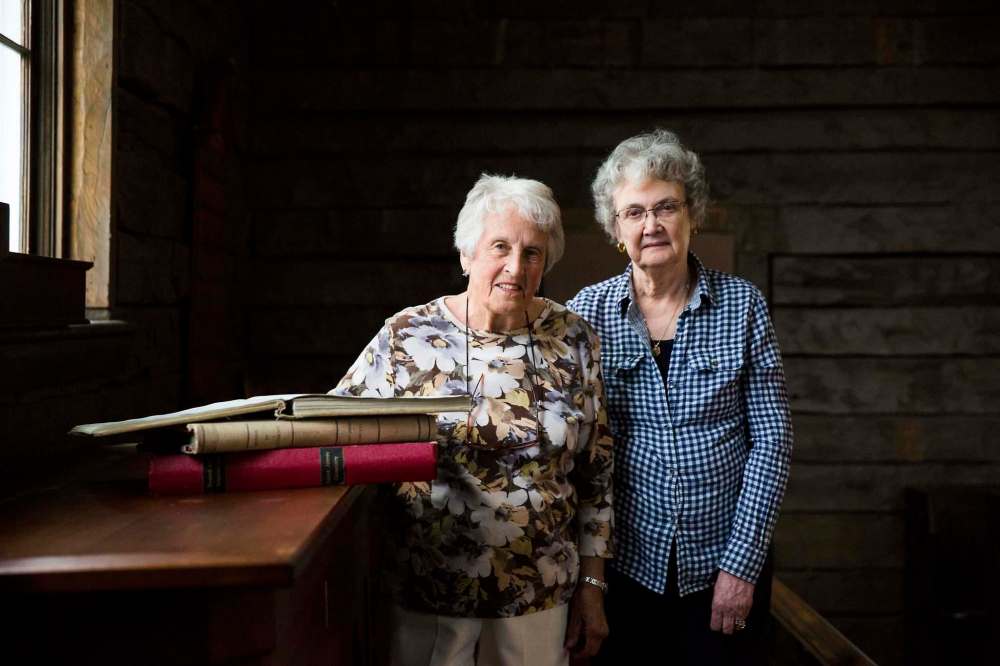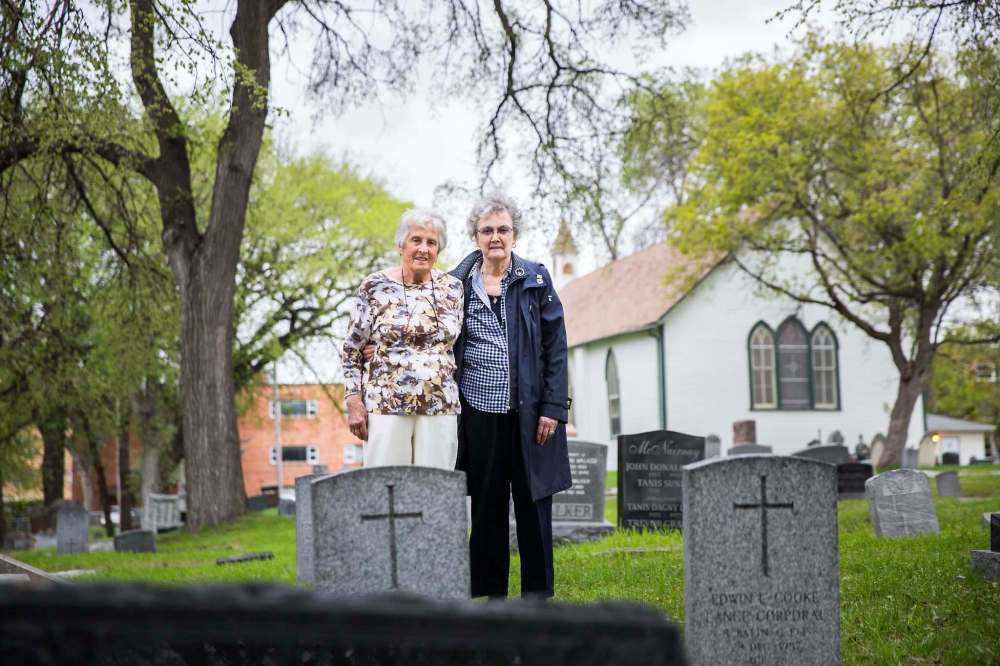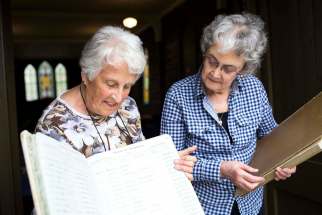Discovery reveals interment of thousands of infants in Winnipeg cemetery
Read this article for free:
or
Already have an account? Log in here »
To continue reading, please subscribe:
Monthly Digital Subscription
$0 for the first 4 weeks*
- Enjoy unlimited reading on winnipegfreepress.com
- Read the E-Edition, our digital replica newspaper
- Access News Break, our award-winning app
- Play interactive puzzles
*No charge for 4 weeks then price increases to the regular rate of $19.00 plus GST every four weeks. Offer available to new and qualified returning subscribers only. Cancel any time.
Monthly Digital Subscription
$4.75/week*
- Enjoy unlimited reading on winnipegfreepress.com
- Read the E-Edition, our digital replica newspaper
- Access News Break, our award-winning app
- Play interactive puzzles
*Billed as $19 plus GST every four weeks. Cancel any time.
To continue reading, please subscribe:
Add Free Press access to your Brandon Sun subscription for only an additional
$1 for the first 4 weeks*
*Your next subscription payment will increase by $1.00 and you will be charged $16.99 plus GST for four weeks. After four weeks, your payment will increase to $23.99 plus GST every four weeks.
Read unlimited articles for free today:
or
Already have an account? Log in here »
Hey there, time traveller!
This article was published 03/06/2019 (2382 days ago), so information in it may no longer be current.
The recent discovery of a missing register book has uncovered the interment of thousands of stillborn or miscarried infants at a historic Winnipeg cemetery.
“There’s nobody who can tell me why or where they went,” said cemetery manager Margaret Steele of the 2,800 infants buried in unmarked graves at St. James Anglican Cemetery from about 1880 to 1976.
Steele said the large historic register shows information such as the infant’s surname, cause of death, often listed as stillbirth, doctor’s name, and referring agency. Sometimes the parents are named, and in other cases the name of a long-closed funeral home is included instead.

The cemetery — directly across from Polo Park — is also home to a heritage log church, constructed in 1853, and used for Sunday services in July and August.
Previously Steele worked from an incomplete list and was not provided with the register book from 1908 to 1976 when she took over the management of the cemetery 18 years ago.
She didn’t know the register existed until church leaders examined the contents of the church safe and found it among other record books that were placed there decades ago. Another church member took it home to examine it more closely, and Steele received the register about 18 months ago.
Some records are particularly heartbreaking because the details of the births and deaths are unknown, explained church member Rosalie Gill, who volunteered to compile a list of all the infants from the newly found register.
Although the list is still incomplete, Steele can consult it to confirm the burial of an infant, although none of these infant graves is marked. She does not know if the infants were buried together or scattered throughout the cemetery.
“They would have been received in an appropriate way and buried in an appropriate way.”
Steele said the institutional memory about these infant burials has been lost, but she guesses that parents were told the remains would be sent to a funeral home for cremation, and then on to the cemetery for burial. She believes St. James received all Protestant infants from Winnipeg hospitals, and several of the infants’ families lived in northern Manitoba.

Currently, both Health Sciences Centre and St. Boniface General Hospital hold services in spring and fall for families who have lost babies. Parents may choose to participate in those services, or make their own arrangements with local funeral homes, explained Katherine Fox, HSC director of communications.
Fox said the hospital could not provide any information about the burial of stillborn or miscarried infants at St. James Anglican Cemetery.
Some of the infants buried in the Roman Catholic cemeteries run by St. Boniface Cathedral had first and last names recorded, and some were unnamed, said executive director Marc Foidart. He said 80 per cent of the graves in the cathedral cemetery are unmarked due to flooding or the deterioration of wooden markers.
Times were different 50 or 60 years ago and parents may have been told to forget about their dead baby and try for another one, said Steele, a retired nurse.
“Nobody talked about it and nobody knew what to say,” she said of responses to miscarriages or stillbirths.
“It was a different era and a different focus. Now grieving is more recognized and people are more open about expressing that grief.”
That recognition prompted Steele to propose to the church board that a memorial be held to honour the losses and provide closure for families who don’t know where their infant was buried.

Steele has received donations to pay for a memorial marker and park bench to be placed at the south end of the four-acre cemetery, which is located on Tylehurst Street, south of Portage Avenue.
Rubble from a former shed at that location will be smashed and used to provide a gravel base for the memorial.
“It’s quiet, it’s under a tree, it’s near the river. It’s just a place to be close (to their child.),” Steele said of the spot that could be used by families and others who have experienced prenatal losses.
“It’s an opportunity to remember all the wee souls that are there,” added Rev. Murray Still, rector at St. James Anglican Church.
“Children are a gift of God.”
Steele hopes sharing this story publicly may help fill in a few more details about how these wee souls came to St. James Anglican Cemetery and then were nearly forgotten. She hopes volunteers might come forward to help plan and prepare the site, or even scan the record books so digital versions could be safely stored in diocesan archives.
“This (project) has suddenly taken over me. These babies are going to provide life to an aging cemetery,” said Steele.

“By opening up this memorial garden, it will bring finances and activity and people coming to visit.”
The cemetery operates on an annual budget of $47,000 and handles about 20 burials a year. In addition to the thousands of wee souls, the cemetery has about 10,000 marked graves.
faith@freepress.mb.ca
The Free Press is committed to covering faith in Manitoba. If you appreciate that coverage, help us do more! Your contribution of $10, $25 or more will allow us to deepen our reporting about faith in the province. Thanks! BECOME A FAITH JOURNALISM SUPPORTER

Brenda Suderman has been a columnist in the Saturday paper since 2000, first writing about family entertainment, and about faith and religion since 2006.
Our newsroom depends on a growing audience of readers to power our journalism. If you are not a paid reader, please consider becoming a subscriber.
Our newsroom depends on its audience of readers to power our journalism. Thank you for your support.
History
Updated on Monday, June 3, 2019 1:51 PM CDT: edits cutlines, tweaks headline
The Free Press acknowledges the financial support it receives from members of the city’s faith community, which makes our coverage of religion possible.









